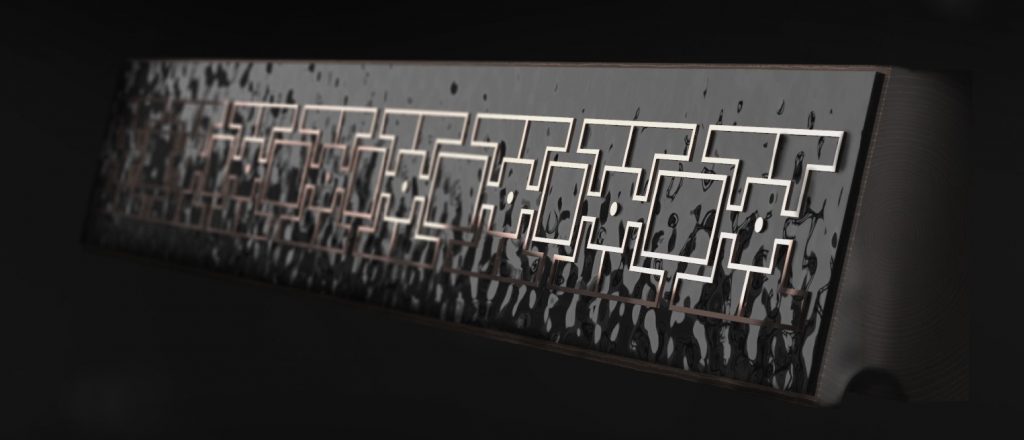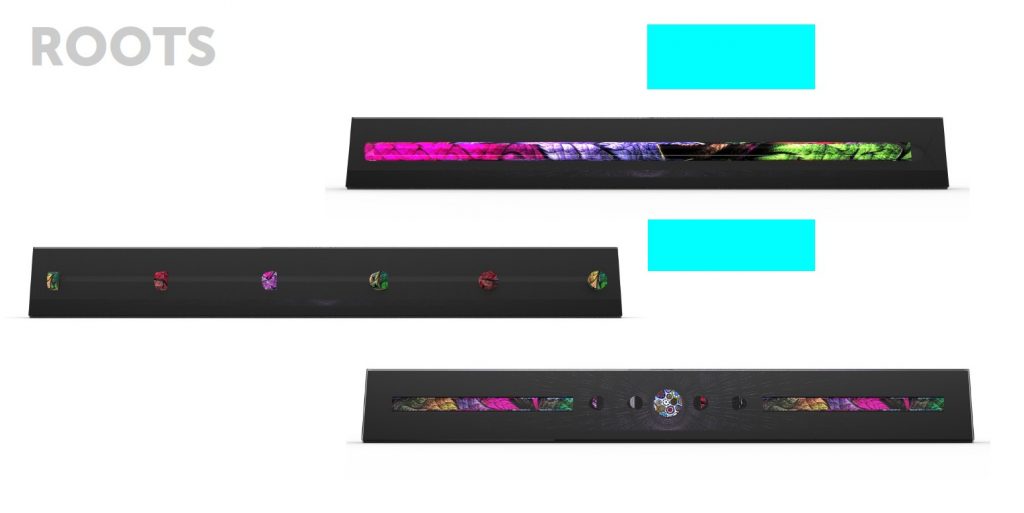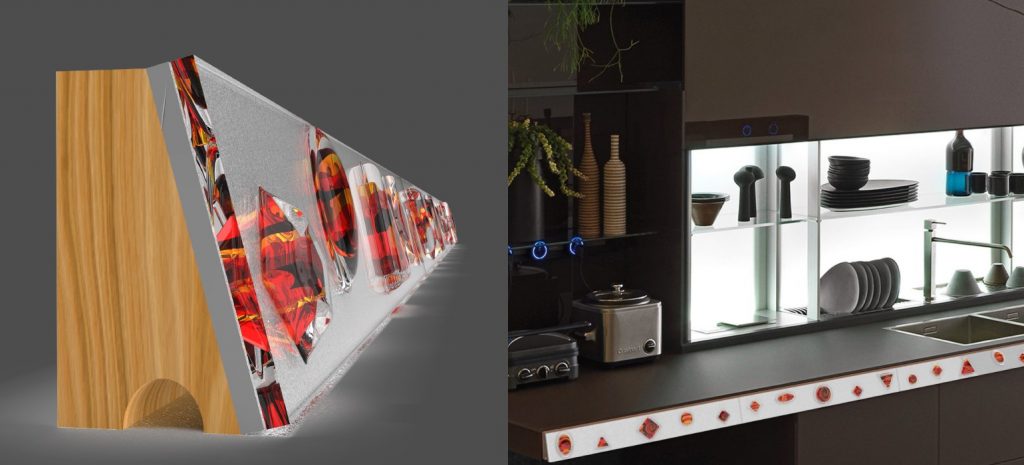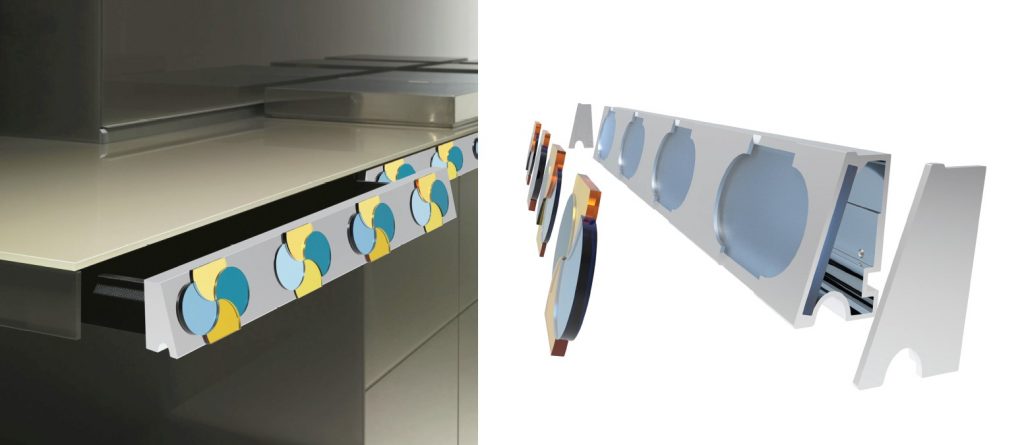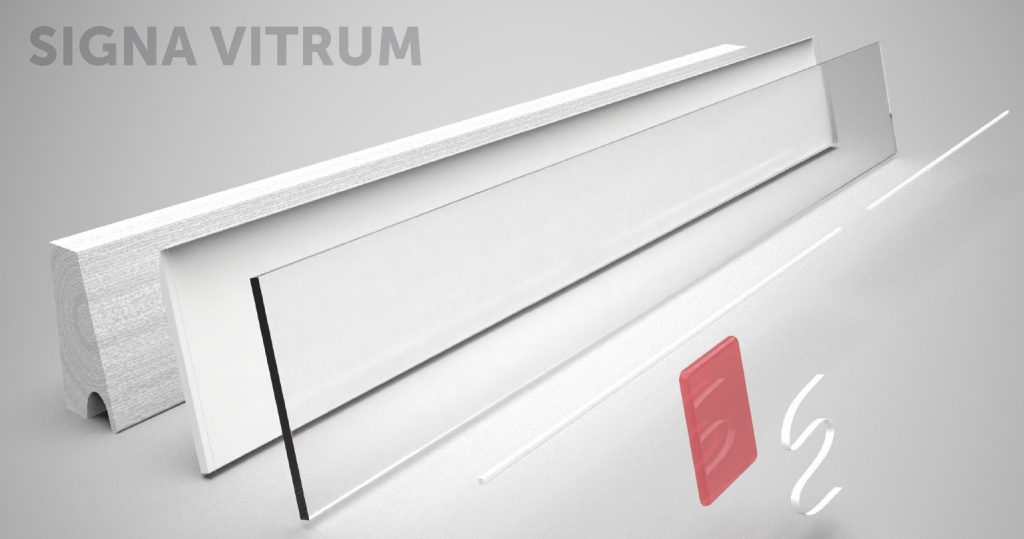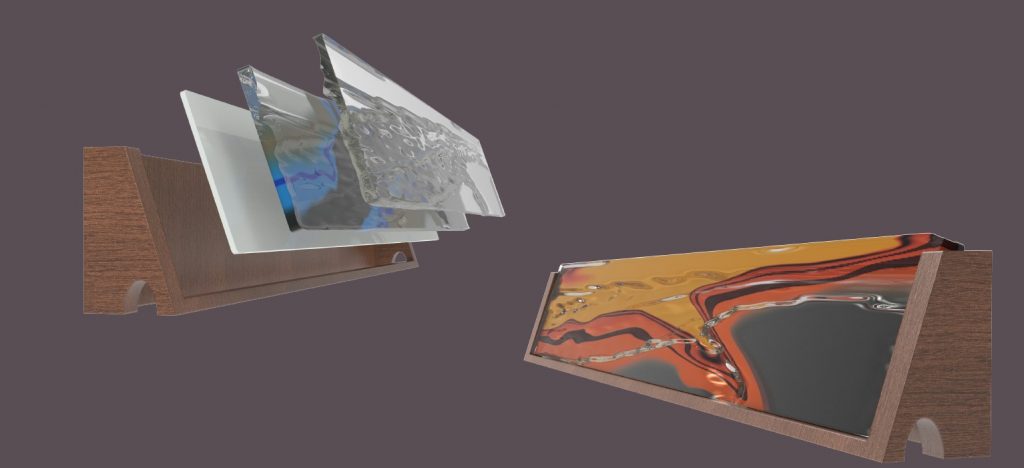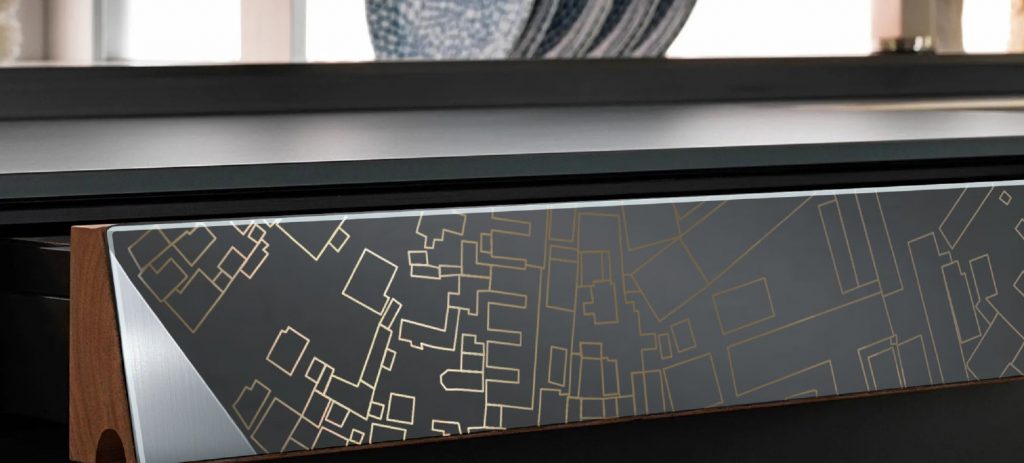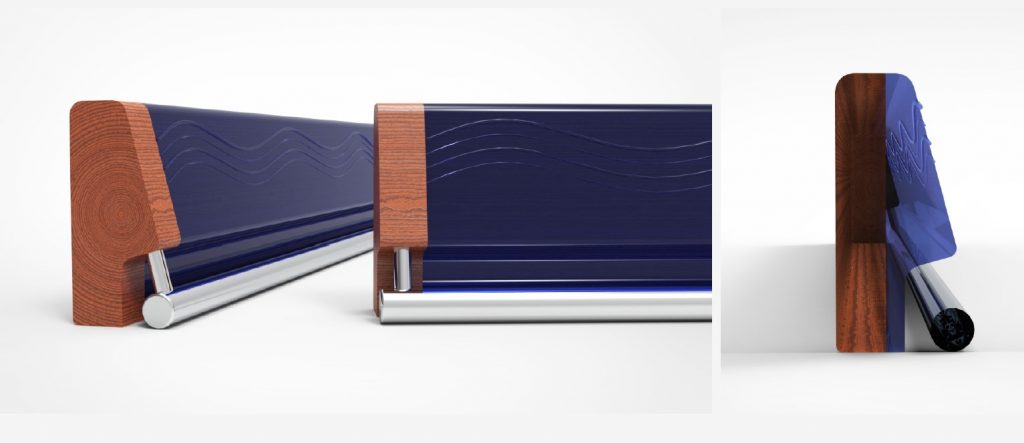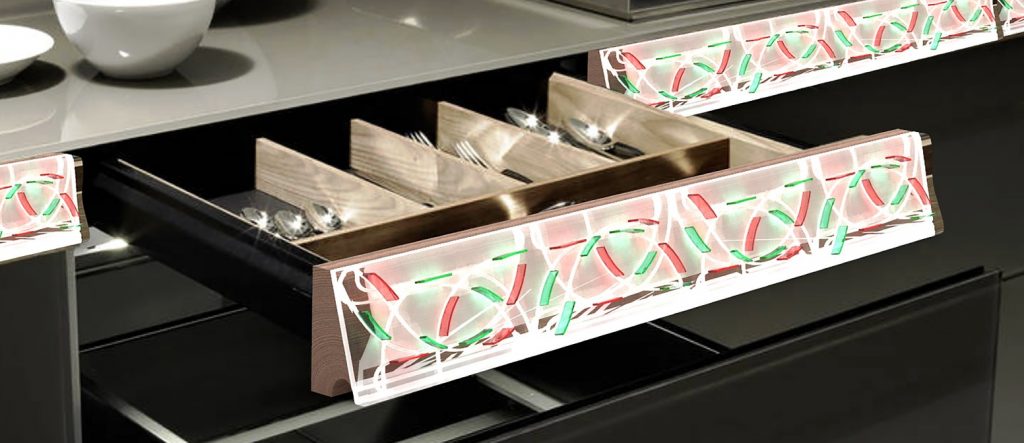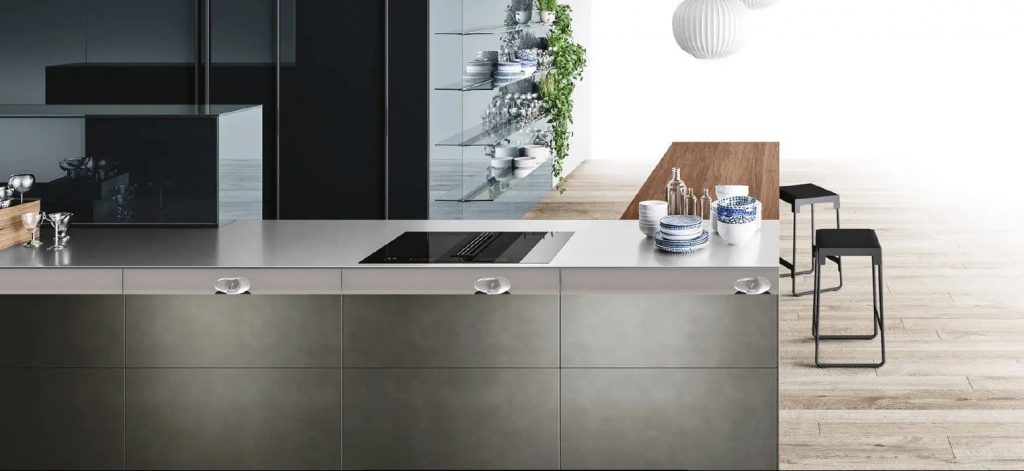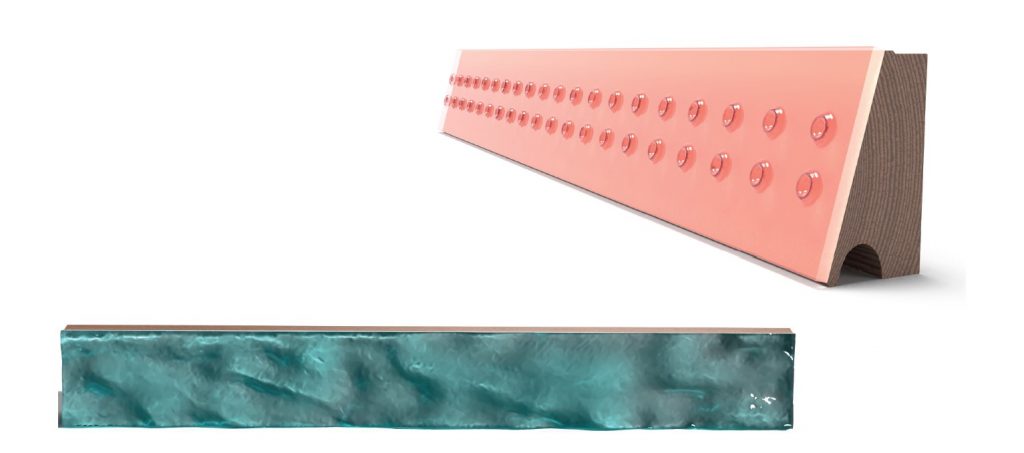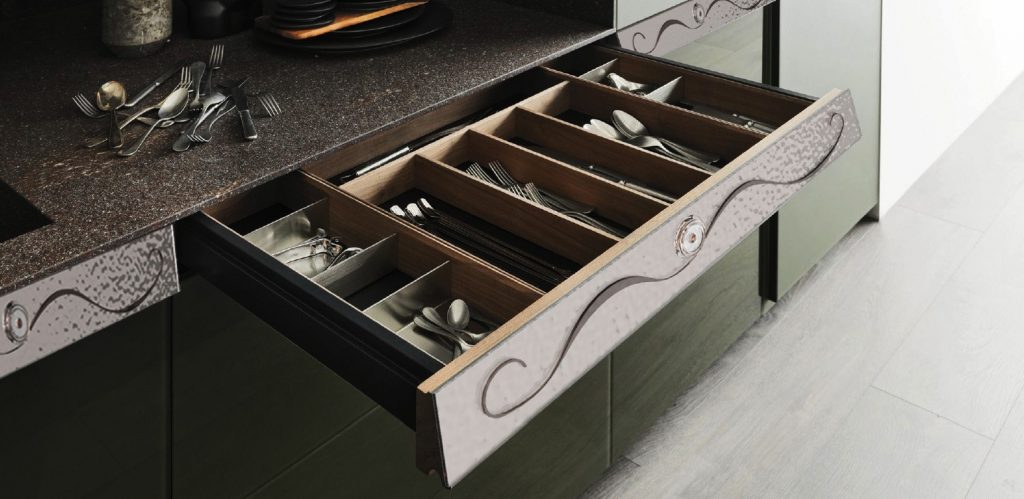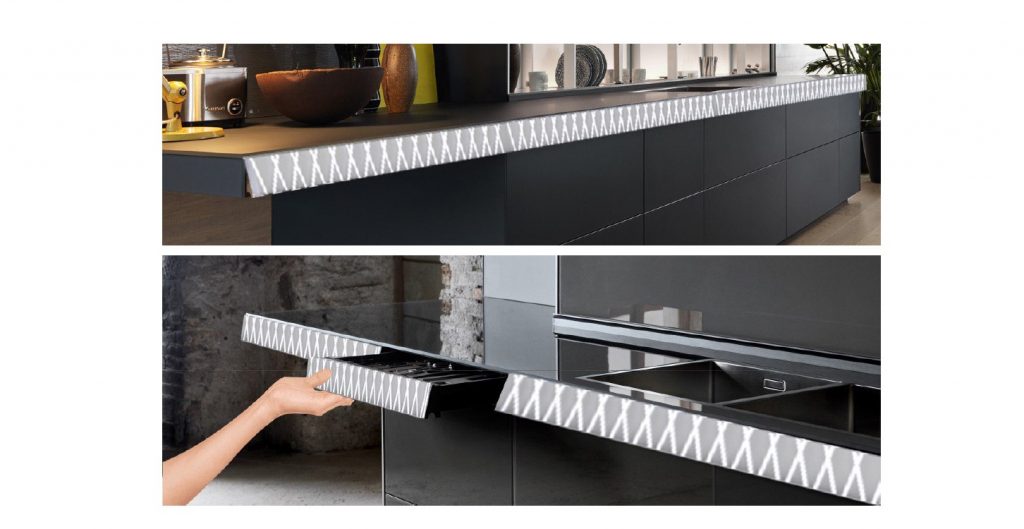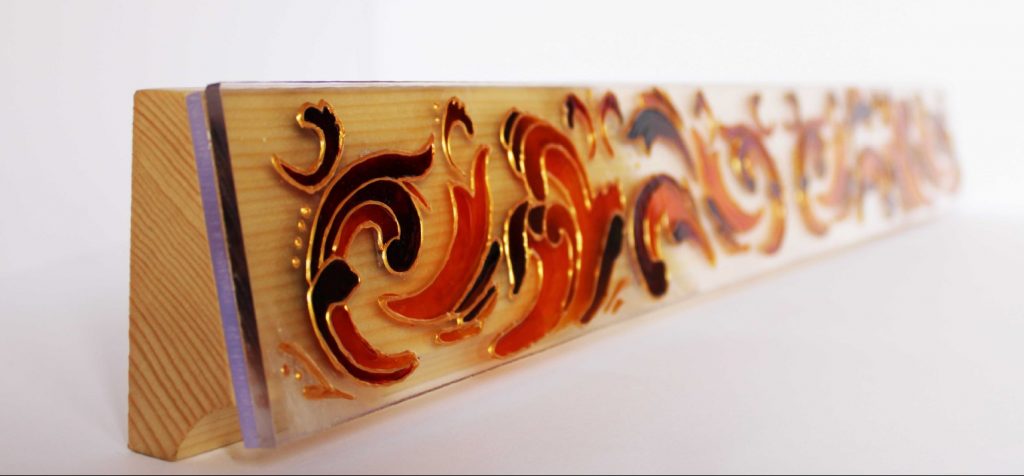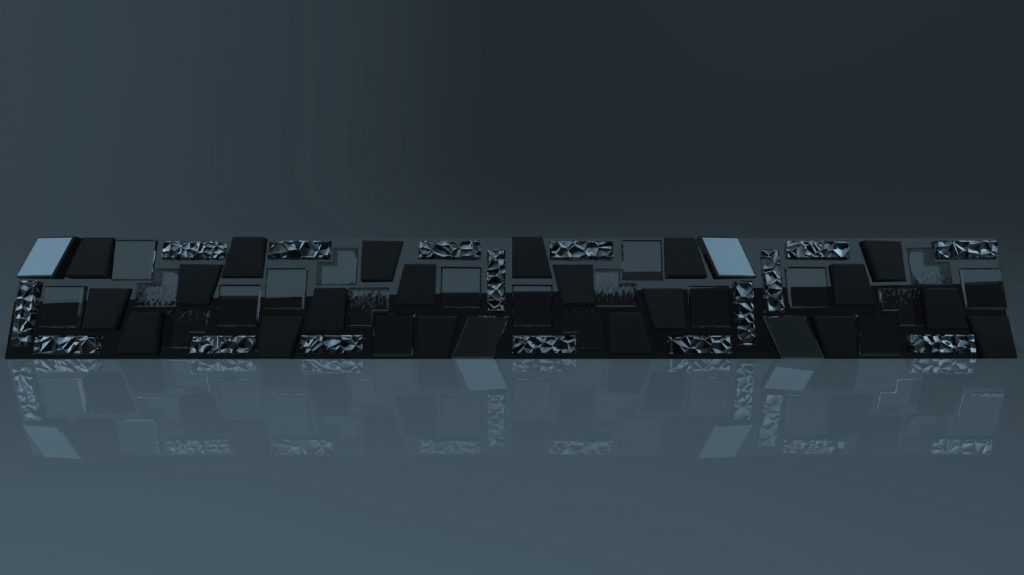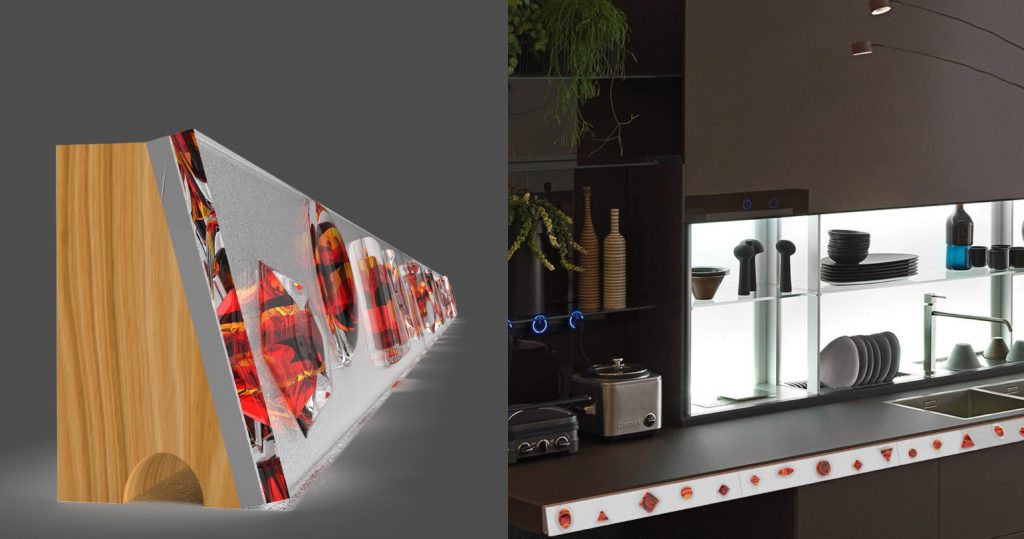Students attending the Design Course in the Pordenone branch of ISIA Roma (in collaboration with MUVE, Foundation of Civic Museums in Venice, and the Graphic Design and Communications students of the Abate Zanette Technical and Technological Institute) have imagined new ways of customising the drawer of the Genius Loci collection, inspired by the glass manufacturing tradition of Murano.
Thus, Genius Loci confirms itself as a means of enhancing the type of craftsmanship Italian culture was – and continues to be – famous for by wisely managing values, techniques and aesthetics.
Plaza Project
With the Plaza project we wanted to communicate two Italian excellences, merging the technique and design of Valcucine with the technique and craftsmanship of the master glassmakers of Murano. We therefore represented diagrams of the most famous Italian squares inside Genius Loci, creating a map of textures and materials that could be enhanced according to the light that strikes them. Having decided on the squares, defined the patterns and ordered the patterns, we decided to assign to different cities, different materials according to fame or colour, hence a copper for Venice, reminiscent of the roofs of houses, a titanium for Bologna, home of multiple car and motorbike manufacturers, and finally brass for Milan, the city of fashion.
Authors:
Falcomer Andrea
Gobbo Marco
Roots – Small Steps
Roots is like a thin root that unravels through the combination of different types and colours of precious Murano glass, bringing to life the historic and elegant Venetian Murrine and its fascinating history. It will be presented in three Genius Loci frontals side by side, creating continuity and harmony between them to reproduce the production process of these small works of art, from their primordial to their final appearance. Roots is defined through touch and sight. In its first phase it will show and make one feel the continuity of a murrina slat at its origins, leading into a second phase in which it will be divided into six equal pieces but placed at different angles. In the last phase, it will define the achievement of its process by showing the beauty enclosed within. Each faceplate will have incorporated a LED strip in its support to create elegant plays of light and honour the murrine.
Authors:
Beatrice Centonze
Luigi Flaiban
Bullae
Bullae is a faceplate made of Murano glass, composed of a series of solid-shaped rings made of glass and a sheet of transparent glass that follows the composition of the rings. The aim of the project was to show glass in a form that does not usually belong to it. form that does not usually belong to it. The various modules of the faceplate are different from each other and each
consists of five freely arranged elements. The desired effect is that of coloured bubbles suspended in a vacuum.
The colour palette used for the rings (style murrina) may vary and adapt to the chosen kitchen.
Author:
Paola Pettoello
Vitrum Geometrica Project
Vitrum Geometrica are small glass geometries set into the sloping front of the drawers in Valcucine’s Genius Loci kitchen. The idea was born taking inspiration from the medieval stained glass windows that characterise Italian churches, making them more modern through simple and linear shapes.These small pieces of glass come to life through the use of several point sources of light that, placed on the back of the front, illuminate the geometries. The linear succession of forms allows the kitchen to be warmer and more enveloping, thus becoming a focal point within one’s home.
Authors:
Alessandro Boscariol
Antonella Zorzetto
Signa Vitrum
Signa Vitrum is a symbolic language to be applied to the front of the Genius Loci drawer. The five symbols (square, circle, rhombus, triangle and hexagon) that recall the contents of the drawers are placed in the centre in the form of a coloured glass murrine. In the background is a filigree weave that runs along all the drawers. The murrina thus becomes a precious jewel.
At the top of the drawer there is a light that illuminates from behind the glass and the murrina. The language of symbols can become a game for children and an aid for visually impaired people in identifying the object contained inside the drawers.
Authors:
Monica Pavanello
Rosa Turchetto
Aquavitrea
Aquavitrea is a glass and wood front for the drawer of the Genius Loci kitchen by Valcucine. The object features relief plates that reproduce the morphology of the seabed of the canals of Venice, enriched with chalcedony glass artefacts that reflect the differences in depth and take on the symbolic value of running water. The morphologies used for the realisation of the slabs derive from territorial analyses using echosounding / bathymetric lasers, the result of a study published by ISMAR – CNR in 2020, of the area of the Canale of Giudecca, where there is the most intense nautical traffic.
Author:
Lorenzo Bonan
Vitrum Loci – Urban weaves
Vitrum loci is a drawer that enhances the Venetian area through the union of Murano glass with precious metal materials such as copper, brass and titanium. The glass allows the characteristics of the metals to be amplified through opaque and transparent plates, also giving a special tactile experience with the presence of three-dimensional surfaces. The maps on the drawer can be varied and customised, even in terms of materials, and the light above it illuminates everything for a striking effect.
Authors:
Davide Migliaccio
Ioan Zavate
Combo
Combo is a drawer front from the Valcucine collection “Genius Loci” collection. The design is characterised by a support into which an artistically worked sheet of glass is glued. The handle is a metal rod assembled to the main surface. The visual effect he wants to create is that of the union of different materials, a design work typical of Lorenzo Damiani’s Italian design. In this case, the materials used are wood, glass and metal. Just as the handrail of a motorboat separates man from the sea, the handle in the drawer separates man’s hand from the representation of the sea in the glass panel. The juxtaposition of the drawers delineates the kitchen as the handrail delineates the living space of the boat. The metal rod acts as the prehensile handle of the drawer.
Authors:
Gioia Canal
Marco Cescon
Generative mosaic
Generative mosaic is the product of the union between generative design and the mosaic technique. The drawer is generated by fragments of coloured recycled glass, positioned using the curves of one of the symbols of Venice: the iron of the gondola. The drawer is very luminous, since thanks to the lighting placed under the kitchen top, a play of light is created between the glass fragments and the sheet of transparent artistic glass placed above.
Authors:
Eleonora Bravi
Camilla Camatta
Gemma
Gemma is the drawer front designed for the Genius Loci kitchen from the company ‘Valcucine’. Made entirely in Murano glass, it exalts and pays homage to the ancient technique of glass-blowing through the creation of this jewel that becomes the protagonist and focal point of the entire frontal. The gem has an elliptical shape and inside, exactly in the centre, houses a circular bubble. The element is not only decorative, but also functional: the drawer can, in fact, be opened via the groove underneath. The position of the gem on each of the 5 modules varies progressively, visually transmitting an idea of movement and continuity.
Authors:
Anna Battistella
Alessia Colombo
Res Maritimae
For our proposals, we started from the concept that Murano is synonymous with glass and water. On this concept we based our search for the elements that could best identify the relationship between the product and the sea. For the ‘Aspera Mare’ proposal, we took inspiration from the movements produced on the surface of the sea when it is agitated. For the ‘Polypus’ proposal we took inspiration from the octopus and its suckers: the sinuous shapes were rationalised and geometricalised.
Authors:
Andrea Ceschin
Elettra Guidi
Modus
Modus is a project that explores the world of glass craftsmanship. Its composition is inspired by the gestures and movements performed by glass artisans during the of production. The graphic signs that make up the decoration of the faceplate are the result of a synthesis of the movements and gestures in glassmaking. The colours have been chosen so as to make the composition in the Genius Loci kitchen by Valcucine harmonious. The decorations will be created using the technique of glass fusion, a very ancient process that offers infinite possibilities of artistic expression.
Author:
Sofia Conte
Mikado
Mikado is a drawer front with a scruttura made with, two sheets of handcrafted glass in which a rod is sunk and an opaque glass sheet is fronted so that the wooden support in the back cannot be seen. Mikado, thanks to the light that strikes the rods from above, can create different plays of light, creating special atmospheres.
Author:
Tommaso Feltrin
Prospectus project
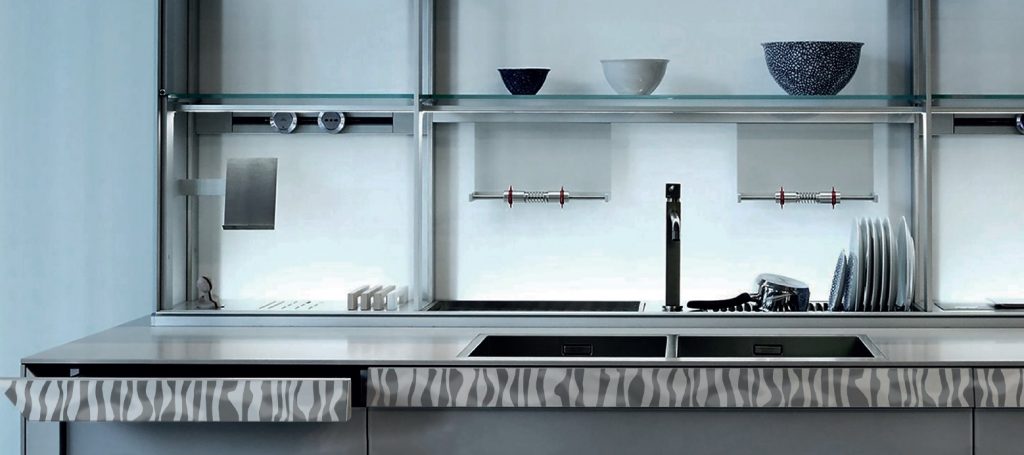
The inspiration for the project comes from the ability of glass to modify the images on which it is superimposed and from its affinity with the surface of the sea, a characteristic element of the city of Murano; combined with the desire to contrast Valcucine’s characteristic regularity and linearity with a soft and sinuous element. The results obtained are unpredictable patterns that change depending on the position in which the observer finds himself. The composition is formed by a lower layer of coloured glass rods, derived from the scraps of different processes, on which a sheet of corrugated transparent glass is superimposed. The result is a pattern that changes with respect to the position in which the observer finds himself. The LED, placed under the kitchen top, creates a play of light inside the kitchen.
Authors:
Silvia Monaco
Martina Moriconi
Genius Aurea
Genius Aurea consists of two sheets of glass glued together with the support of the backing wood. The inner sheet in industrial glass contains the lighting and has a structural function; while the outer sheet in handcrafted glass, where there is a symmetrical grotesque decoration, is illuminated when the drawer is closed. The decoration is modular and repeatable, compatible with any length of drawer, and can also be customised at the customer’s discretion. The intention is to create a New Renaissance, man is placed at the centre of the study, but with it also Nature, as opposed to the traditional Renaissance. What distinguishes the design is the use of the enamelled glass technique and grotesques as shapes to create the decorations.
Authors:
Aurora Presello
Gaia Bacchetti
Murius
Murius is a map made of Murano glass, representing a unique and undefined city, but taking forms that characterise the Italian territory. The structures are compact and small to medium-sized, with different gradients and materials, thus allowing natural or artificial light to create shadows and reflections constantly changing depending on the light beam. Murius is realised with a pattern of four modules, each consisting of 15 elements. The latter are shaped glass fragments with different processes: embossed, polished, matt, mirrored and enamelled which are skilfully positioned by master glassmakers on a base of tempered glass using epoxy glues.
Authors:
Gaia Bucciol
Mattia Guiotto
Bullae
Bullae is a faceplate made of Murano glass, composed of a series of solid-shaped rings made of glass and a sheet of transparent glass that follows the composition of the rings. The aim of the project was to show glass in a form that does not usually belong to it. form that does not usually belong to it. The various modules of the faceplate are different from each other and each consists of five freely arranged elements. The desired effect is that of coloured bubbles suspended in a vacuum. The colour palette used for the rings (style murrina) may vary and adapt to the chosen kitchen.
Author:
Paola Pettoello


